Eni Extends BW Offshore's Abo FPSO
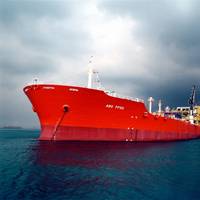
Italian oil company Eni has extended its contract for BW Offshore's Abo floating production storage and offloading (FPSO) vessel for another year.The FPSO's owner BW Offshore said Thursday it has signed the extension with Eni's subsidiary Nigerian Agip Exploration.Under the extension, the FPSO, used for production from the Abo field offshore Nigeria, will remain on the contract until the end of the fourth quarter of 2022, with options until the second quarter of 2023. The FPSO contract was previously extended by one year in January 2020…
Eni Extends Abo FPSO Contract
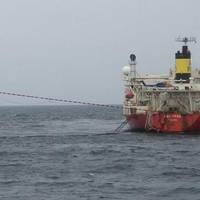
Italian oil company Eni has extended the contract for BW Offshore's Abo Floating Production Storage Offloading (FPSO) vessel.BW Offshore, the owner of the FPSO, said Monday it had signed the extension with Eni's subsidiary Nigerian Agip Exploration.Under the extension, the FPSO, used for production from the Abo field offshore Nigeria, will remain on the contract until the end of the fourth quarter of 2021, with options until Q2 2023. The FPSO contract was previously extended by one year in January 2020.The FPSO…
Keppel Breaks FPSO Conversion Record
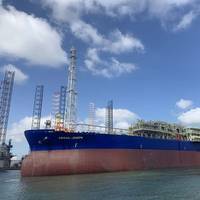
Singapore's offshore facilities builder Keppel has said it has delivered "the world’s fastest brownfield Floating Production Storage and Offloading vessel (FPSO) modification and upgrading project."Named FPSO Abigail-Joseph, the vessel was delivered to Malaysia's Yinson Holdings. According to Keppel, it took it seven months to complete the project.Chris Ong, CEO of Keppel O&M said, "This is our 134th floating production vessel, and we are pleased to be able to fast-track the project and upgrade it in under seven months.
Offshore Energy Outlook for 2020
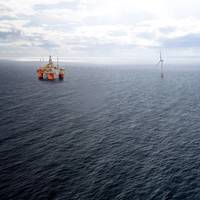
The “new normal” is a phrase tossed around often in offshore energy circles today as those servicing and operating in the sector grapple with the harsh realities of the prolonged industry downturn. Operators, service companies and equipment suppliers have been forced to adjust to oil selling at prices well below the $100+ per barrel mark seen in years past. As of this writing, Brent oil was hovering around $62 per barrel, and analysts expect prices will remain in this range for some time into the future.On top of this…
Newbuild Kreuz Challenger Mobilized for Brunei Shell Contract
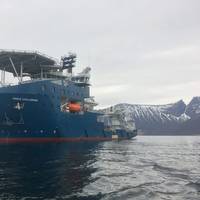
Subsea services company Kreuz Subsea has mobilized the recently delivered newbuild dive support vessel, Kreuz Challenger, as part of its seven-year contract with Brunei Shell Petroleum Company Sdn. Bhd. (BSP).The contract, which runs until 2022, includes supporting BSP with inspection, repair and maintenance services to be carried out on offshore oil and gas structures in Negara Brunei Darussalam's territorial waters.Typically located in water depths of up to 80 meters, these include drilling platforms…
FPSO Moored at Catcher Field
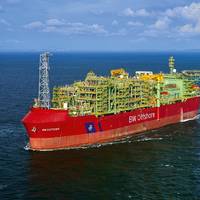
Premier Oil’s Catcher project remains on pace to achieve first oil before the end of this year with the arrival and hook up of the Floating Production Storage and Offloading (FPSO) vessel BW Catcher last week in the U.K. North Sea. BW Catcher arrived at the Catcher field on October 18, and the hook up of the Submerged Turret Production (STP) buoy mooring system was completed on October 19 with the vessel completing a rotation test around the buoy on October 20, Premier Oil said. Final pull-in of the risers and umbilicals is underway, and commissioning activities have commenced in parallel.
Wison Launches Buoyant Tower Solutions with Storage

Wison Offshore & Marine has developed a new Buoyant Tower solution with condensate or oil storage, adopting Wison’s proprietary Buoyant Tower technology. This floating concept provides a new economic and reliable option for the oil and gas development in the shallow to medium-depth waters. Originally invented by Ed Horton and Lyle Finn, the Buoyant Tower technology was first applied to BPZ CX-15 project offshore Peru when both Ed and Lyle worked for Horton Wison Deepwater Inc. (HWD), now renamed as Wison Offshore Technology Inc.
MAN’s Subsea Compressors Reach Field Proven Status
Both subsea compression trains at Statoil’s Åsgard field have achieved more than 25,000 operation hours with an availability close to 100 percent. The world’s first subsea gas compression facility features two MAN Diesel & Turbo HOFIM motor-compressor units. The Åsgard subsea compression system has officially reached the highest Technology Readiness Level (TRL) 7 with both trains surpassing 10,000 operating hours. The subsea facility demonstrated an availability close to 100 percent - the very few interruptions were caused by failure of the power supply from the vessel. “MAN Diesel & Turbo’s persistence in driving technology solutions…
Keppel to Deliver World's First Converted FLNGV
Keppel Offshore & Marine's (Keppel O&M) wholly-owned subsidiary, Keppel Shipyard Ltd (Keppel Shipyard), will soon deliver the world's first converted Floating Liquefaction Vessel (FLNGV) owned by Golar Hilli Corporation (Golar), a subsidiary of Golar LNG Ltd. The vessel was named Hilli Episeyo at a ceremony in Keppel Shipyard today. Upon its completion, the FLNGV will be put in operation offshore Kribi, Cameroon for Société Nationale des Hydrocarbures and Perenco Cameroon SA, and will be the first FLNGV project in Africa. Chris Ong, CEO of Keppel O&M said, "We are proud to be able to deliver the world's first FLNGV conversion in partnership with Golar LNG within three years and with a commendable safety record.
FPSOs Sit Unprecedentedly Idle
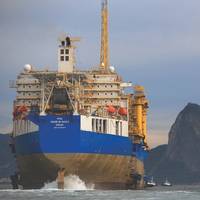
The 20 year four-fold growth pattern in the world’s FPSO fleet stalls out in 2016 with a record number of FPSOs idle and available for redeployment – or perhaps to be forced into other uses, lay up or scrap. FPSO redeployments typically are far more complex, costly and risky than for (say) drillships and yet the need for redeploying idle FPSOs is now in the forefront of the industry like never before as FPSO owners also have to face the worst ever down market for their equipment and services.
First Wärtsilä X62DF Engine Ready for Large LNG Carrier
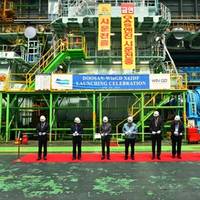
On April 5, 2016 Winterthur Gas & Diesel (WinGD), together with Doosan Engine Co., Ltd demonstrated the first low-speed low-pressure Wärtsilä six-cylinder X62DF (W6X62DF) engine for a commercial application. The event took place at Doosan’s works in Changwon, Korea and the W6X62DF engine is also the first sold X-DF engine for the new generation of very large LNG carriers. It is currently under test by Doosan before delivery and is one of a pair that will power the first of two 180…
MHI Subsidiary in Brazil for FPSO Compressors
In December Mitsubishi Heavy Industries Compressor Corporation (MCO), a Group company of Mitsubishi Heavy Industries, Ltd. (MHI) based in Hiroshima, will establish a new company in Brazil in a joint venture with Mitsubishi Corporation (MC), to be known as MHI Compressor do Brasil Ltda. (MCO-B). Creation of the new entity, which will launch commercial operations in February 2016, is targeted at developing the Latin American market for compressors, with a focus on expanding sales of compressors for use in Floating Production, Storage and Offloading systems (FPSO), a market expected to see robust demand as Brazil develops deepwater oil fields. Initially MCO-B will perform sales and after-sale servicing functions, with local manufacturing capability targeted for the future.
FUGRO Wins Blue Stream Pipeline Inspection Contract
Fugro has been awarded a contract by Blue Stream Pipeline Company B.V. for the provision of survey support vessels and associated survey services to perform the 2015 external pipeline inspection for the offshore, shore approach, and dry section components of the Blue Stream Pipeline System. The two 24” gas export pipelines, E1 and W2, run from the Beregovaya gas compression station in Russia’s Arkhipo-Osipovka, 235 miles (378km) across the Black Sea, with a maximum water depth of approximately 2,150m, to the Durusu inlet terminal 40 miles (64km) from Samsun in Turkey. The in-field work in both areas has been completed and the reporting stage is now underway.
First Subsea Wet Gas Compressor Installed
After several years of technology development, construction and testing the first subsea wet gas compressor in the world is now installed at the Gullfaks C platform in the North Sea. In May and June Gullfaks subsea compressor project (GSC) completed successful structure and module installation campaigns for the subsea station. The compressors were installed at the end of June. Subsea wet gas compression at Gullfaks C will add 22 million barrels of oil equivalent, and extend plateau production by about two years. “The installation campaigns have been successfully performed by Subsea Seven,” says project manager Bjørn Birkeland. The project has now entered the last phase, testing and preparing for hand-over and start-up in the last quarter of this year.
Asgard Gas Compression Lowered into Place
The installation of the modules that collectively constitute Asgard subsea gas compression has commenced on the Asgard field. Innovative technology at a depth of 300 metres will create 282 million extra barrels from the Asgard field. A total of 22 modules will be installed and connected. These comprise two identical compressor trains weighing 1,500 tonnes each. During the summer this unique technology will be put in place in the large subsea frame that was installed on the field in summer 2013. The installation work is being carried out by the North Sea Giant vessel, which was rebuilt for the purpose. All the modules are provisionally stored at Vestbase in Kristiansund, from where they are shipped following commissioning and testing in Egersund.
Statoil: Subsea Wet Gas Compressor Coming to Gullfaks
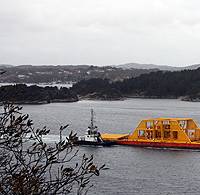
The world’s first subsea wet gas compressor station is now ready for the final testing at Horsøy outside Bergen before being prepared for installation and hook-up to Gullfaks C in 2015. By adding 22 million extra barrels of oil equivalent from the Gullfaks South Brent reservoir the compressor will help extend the field’s productive life. Starting back in 2008 the efforts to develop and qualify the compressor in line with Statoil’s requirements represent a good example of Statoil’s cooperation with the Norwegian supply industry to develop robust improved oil recovery solutions.
Cost Blowouts on Norway's New Oil Developments

Several key oil and gas developments in Norway will cost much more than earlier expected and fields with approved development plans are now seen 10 percent more expensive than originally planned, the oil and energy ministry said on Wednesday. Costs in Norway's offshore oil sector, already one of the most expensive in the world, have soared in recent years, weighing on the budget which provides generous tax breaks during the development phase. The government has already said it would reduce tax breaks for new developments and the oil ministry launched an investigation into why costs soar.
Bureau Veritas to Class, Certify FPSOs for Saipem
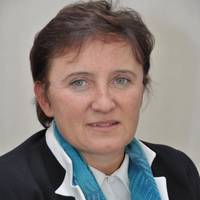
Bureau Veritas has been awarded a contract by Saipem to provide classification and certification services for the two Kaombo FPSOs for service off Angola. The $4 billion project for the FPSOs was awarded to Saipem by Total for the engineering, procurement, installation and commissioning of two converted turret-moored Floating Production Storage and Offloading units (FPSOs) for the Kaombo Field Development Project, located in Block 32, offshore Angola. Bureau Veritas will oversee the conversion of the vessels and class the floaters in service…
Sembawang Shipyard to Convert 2 FPSOs for Kaombo Project, Angola
Sembcorp Marine’s wholly-owned subsidiary Sembawang Shipyard has secured a Floating Storage Production Offloading (FPSO) conversion contract worth about S$600 million from Saipem SA, France for the conversion of Two FPSOs for the Kaombo Project in Offshore Angola. Sembawang Shipyard was awarded this milestone contract on the strength of its capabilities and established track record in the field of FPSO conversion, modification and upgrading work. Under the contract, the Shipyard is responsible for the conversion of 2 Very Large Crude Carriers (VLCCs) sister ships into 2 turret-moored FPSOs for the Kaombo project located in offshore Angola, approximately 150 km from the coast.
Petrobras’ Platform P-62 Begins Production
Petrobras announced that production platform P-62, one of the strategic projects of its 2014-2018 Business and Management Plan, started-up on this Monday, May 12, in Roncador field, Campos Basin. P-62, installed at a water depth of 1,600 meters, is an integral part of the Module 4 project of Roncador field. Twenty-two wells, 14 of them oil and gas production and eight water injection will be interconnected to the platform. The FPSO (floating production, storage and offloading) unit has the capacity to process up to 180 thousand barrels of oil and 6 million cubic meters of natural gas per day. The platform will export oil via shuttle tankers and natural gas will be transferred via a gas pipeline connecting the platform to the gas distribution network of Campos Basin.
Online Monitoring Systems Can Improve Your Bottom Line

All operators, regardless of vessel type, size, location or function, are plagued by the same worries: “When will my next outage happen, and what is it going to cost me?” In an effort to ease these concerns, millions of dollars are invested every year into commercial/workboat maintenance programs. But how can maintenance be maximized without blowing budgets? What’s the most thorough way to monitor equipment? How can all mechanical components be watched for possible issues and failures?
Brazil Offshore: Petrobras & Subsea Engineering
Brazil’s Petrobras has been one of the leading players in deepwater, subsea development projects since the turn of the century. These projects include pre-salt and post-salt plays, which require extensive and complex subsea engineering and construction efforts. It would be impossible for Petrobras to develop all of its projects alone, therefore much is done by specialized companies, mostly of foreign origin. “We could not have advanced in this project (pre-salt) conventionally, developing the production individually. We needed a global vision of the projects, starting from a high level plan,” said José Formigli, Petrobras’ Executive Director of E&P, speaking of the primary plan for the development of the pre-salt at the Santos Basin, the Plansal, which was created in 2008.
Ship Power: Out of the Past Comes Wärtsilä's Engine of the Future
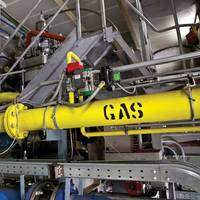
Although the well-known Finnish company Wärtsilä has a very long history, it was founded in 1834, the diesel engine era begins when the company signs a license agreement with Friedrich Krupp Germania Werft AG in Germany. The first diesel engine sees the light of day in Turku in November 1942. From there on Wärtsilä passed a number of rapid expansions in all fields of products. Some of the products stayed and some disappeared. The concentration of being a full solution provider for the maritime industry started in the early 2000’s after lots of talks with potential customers worldwide.






